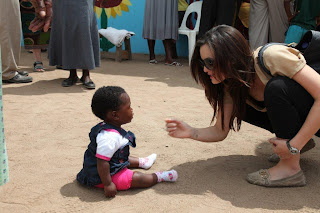The
future of charitable giving: Networking, delegation and cause-related marketing
Just before Christmas my partner Greg Secker and I were invited by
Sir Richard Branson to visit his Centre of Entrepreneurship in South Africa and
discuss both his and our charitable work. As well as visiting a charity our own
Foundation supports, we had the opportunity to discuss with Sir Richard how to
ensure the future of charitable giving and how to make foundations as
financially secure as possible. Here’s some of what we took away:
The key to charitable giving is creating a sustainable framework
from which to operate. How many times have we all said that we would like to
volunteer or even just give our old clothes to charity but never get around to
doing it? Doing one-off small acts of kindness is rewarding but it is almost always
more rewarding when you know you are doing it as a collective and know that
your contributions are sustained in an impactful framework. The impact is
greater and faster when people join forces and there is a certain camaraderie
that is formed when you are doing something for the greater good.
The challenge with once-off giving is that the charity starts to
rely on the income and then when it is removed having built their budgets upon
it, they begin to fail. Charities need commitments from organisations and these
must be of a symbiotic nature. A good example of this is Nabisco biscuits in
the US. Their sales had been falling year to year and they needed to boost
their profits so they decided to use cause-related marketing and team up with
the World Wildlife Fund. They designed a new special edition range of biscuits,
each representing the 4 most endangered species, and changed the box string to
green. They promised to donate 5 cents from every sale to the WWF. The results
were equally wild - $100,000 was raised for the charity and sales increased by 20%
over the course of the two year promotion.
So how do we get our business leaders to think differently? In a
chat with Sir Richard Branson in his game lodge he says, “Leaders stay at the
coal face for too long, delegate early and then you can make better decisions
about the company’s greater vision”. Greg Secker says, “You can think and you
can work, but you can’t do both at the same time. The strategy should look
like:
1)
Delegate early, leaders should be thinking and
planning the vision rather than being caught up in day to day
2)
Identify an appropriate charity that would
bring in revenue to the organisation by association
3)
Align and plan goals, put the marketing
directors from your organisation and the charity together to agree outcomes and
steps
4)
Monitor and change as appropriate
5)
Ensure PR represents both the company and the
charity. Tell a story that touches the heart of the matter”
Running a Foundation is about touching peoples’ hearts so that you
move them into action. There is nothing more powerful than knowing your own
vision and being able to share it. One of the things that impressed me the most
about Sir Richard Branson is the way that he shares his vision and brings
people together, organising monthly think tanks at Neckar island and other
venues around the world for leaders to get together to discuss social change
and current topics. When the earthquakes in Haiti hit, Branson immediately
gathered a group to discuss how they could join forces to help. He is a pioneer
of using leveraged networking to make things happen. This is also a good
example of how Branson seamlessly delegates even if it is to other social entrepreneurs.
We need to think differently as business leaders to embed charity
into our business plan so it becomes an
integral and symbiotic component where one needs the other to succeed, this way
the charity is not the first thing to get cut in times of economic downturn. What
we’ve learnt over the past year was how to build a charitable vehicle that runs
smoothly and how to leverage the power of the people to make things happen. We
have used our expert knowledge of trading the currency markets to create novel
systems that generate large sums of money for charity. All the way we have
thought out of the box and asked ourselves, how can we build a system that
helps the company and the charity symbiotically?
Our greatest fundraising vehicle is our annual Flying Trader project
where Greg trades from a helicopter high over London sending his trade calls
down to our trading floor as hundreds of clients follow his trades simultaneously.
Last year it raised over £150,000 and in our recent trip to The Ubuntu
Education Fund we were able to see how that money was already making a
difference.
The money comes from ticket sales to attend the events and our
broker ETX Capital gives all brokerage commissions to the Foundation. It is a
perfect example of a symbiotic relationship as the more our clients trade, the
more money they earn themselves and the more commission they generate for
charity. The broker is also happy as we are increasing the volume of people
regularly trading and we encourage our clients to use ETX as a broker because
of their charitable giving. Our delegates also form a close and more trusting
relationship with us because they can see we are not only teaching them to
trade but we are also helping charities in the process.
We will be holding another six flying Trader days this year, the
first starting in March. Our target is to raise £250,000 in total for our
chosen charities, Barnardo’s and The Ubuntu Education Fund.
Katherine
Scott, founder of the Knowledge to Action Foundation


